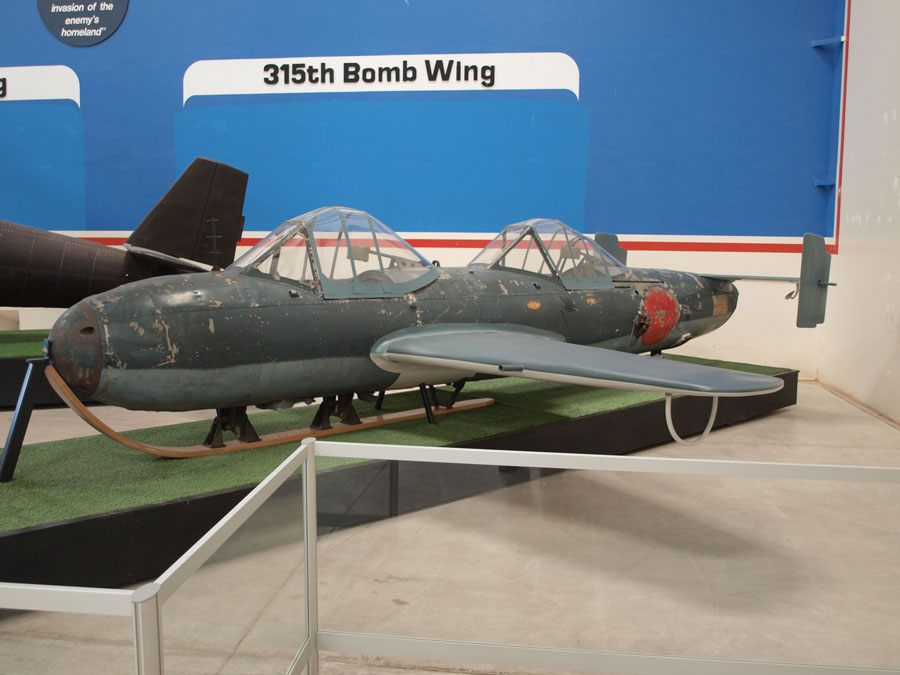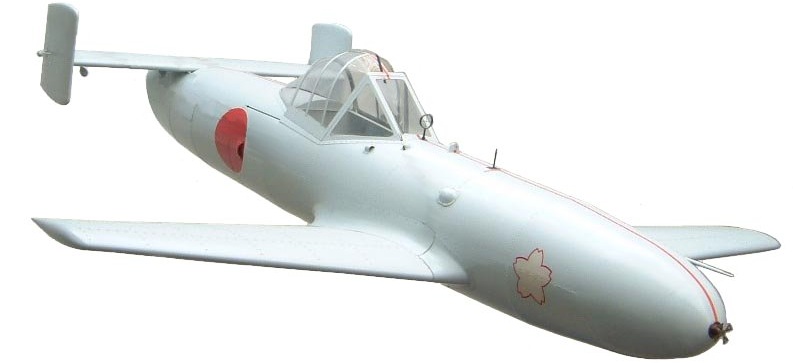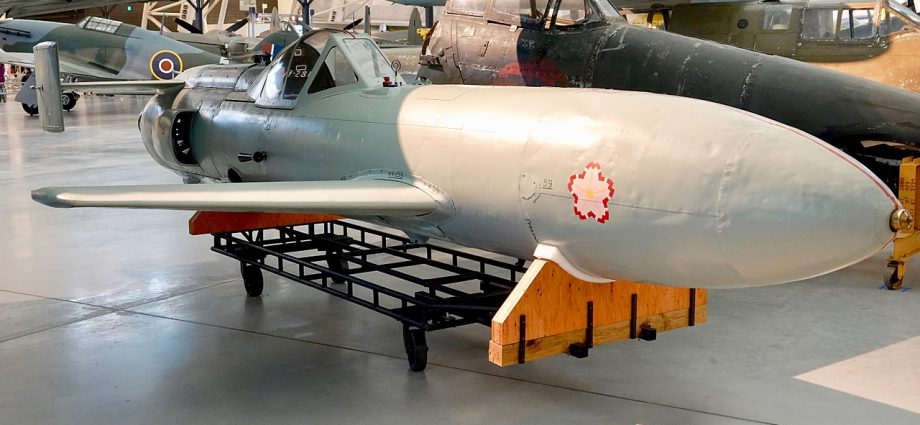Yokosuka MXY-7 “Ohka” (Cherry Blossom) Model 43 K-1 Kai.

This training variant of the infamous ‘Baka bomb’ replaced the warhead for a student pilot. It also has flaps and a retractable skid undercarriage. The aircraft would launch from a catapult and was powered by a single Type 4 Mark 1 Model 20 solid-propellant rocket motor with 573 pounds of thrust, as opposed to the three found on the Model 11 variant used in combat. The intent of the Model 43 K-1 Kai was to give the trainee some experience before being assigned a once off final mission.

The aircraft was a purpose-built, rocket -powered human-guided “kamikaze” attack aircraft employed by Japan against Allied ships towards the end of the Pacific War in World War II. Although extremely fast, the very short range of the Ohka meant that it had to be carried into action as a parasite aircraft by a much larger bomber, which was itself vulnerable to allied fighters. In action during the Battle of Okinawa in 1945, Ohkas were able to sink or damage some escort vessels and transport ships but no major warships were ever hit. Improved versions which attempted to overcome the aircraft’s shortcomings were developed too late to be deployed.


